RBI cuts repo rate by 25 bps to 6%, maintains neutral stance of monetary policy
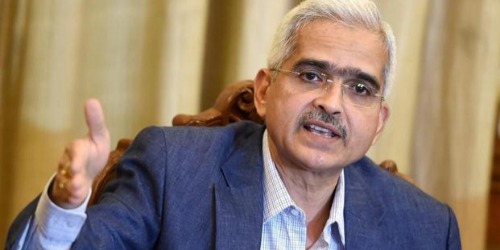
In line with market expectations, the Reserve Bank of India (RBI) on Thursday lowered repo rate by 25 basis points to 6 percent and maintained the neutral stance of monetary policy, in its first bi-monthly rate review of the financial year 2019-2020. Consequently, the reverse repo rate under the liquidity adjustment facility (LAF) stands adjusted to 5.75 percent, and the marginal standing facility (MSF) rate and the Bank Rate to 6.25 percent.
Here're the key takeaways from the RBI policy meet:
Loan EMI likely to come down
The six-member Monetary Policy Committee (MPC), headed by RBI Governor Shaktikanta Das, reduced the repo rate for the second consecutive time by 25 basis points to 6.0 percent from 6.25 percent with immediate effect. This is good news for borrower as EMIs are likely to go down for retail borrowers assuming that banks pass on the benefits of the lowered rates to the end consumers.
As the central bank lowers the key policy rates, it is likely that banks will follow suit and reduce their marginal cost of funds based lending rates (MCLR). The MCLR is an internal benchmark below which banks cannot lend, except in some cases allowed by the RBI. Recently, several banks have lowered their MCLRs in select tenors by 5-15 basis points in the past month, including ICICI Bank, HDFC Bank, Bank of Baroda, Punjab National Bank, Kotak Mahindra Bank, YES Bank and Union Bank of India.
GDP growth forecast lowered to 7.2%
The RBI has cut India's GDP growth projection for 2019-20 to 7.2%, from 7.4% forecasted in February policy meet, because of declaration in domestic economic activity due to due to a slowdown in consumption, both public and private. Adding to it, a slower pace of global economic growth in the back of soft demand and contracting manufacturing activity may also hurt India's growth prospects.
Inflation target lowered to 2.4% in Q4
The monetary policy committee (MPC) lowered retail inflation to 2.4 percent for the fourth quarter of 2018-19, which was pegged at 2.8 percent in the last policy meeting, citing a normal monsoon. The RBI said that CPI inflation excluding food and fuel in February was lower than expected, which has imparted some downward bias to headline inflation. As a result, CPI projection has been revised downwards to 2.4 percent in Q4FY19, 2.9-3 percent in H1FY20 and 3.5-3.8 percent in H2FY20, with risks broadly balanced.
Economy facing headwinds amid global uncertainty
The RBI has noted that there are some signs of domestic investment activity weakening as reflected in a slowdown in production and imports of capital goods. The moderation of growth in the global economy might impact India's exports. On the positive side, however, higher financial flows to the commercial sector augur well for the economic activity. Private consumption, which has remained resilient, is also expected to get a fillip from public spending in rural areas and an increase in disposable incomes of households due to tax benefits. Business expectations continue to be optimistic. Taking into consideration the above factors, GDP growth for 2019-20 is projected at 7.2 percent - in the range of 6.8-7.1 percent in H1:2019-20 and 7.3-7.4 percent in H2 - with risks evenly balanced.
Tepid credit growth
Credit flows to micro and small as well as medium industries remained tepid, though they improved for large industries, the RBI said in its monetary policy statement. Capacity utilization (CU) in the manufacturing sector, however, as measured by the Reserve Bank's order books, inventory and capacity utilization survey (OBICUS), improved to 75.9 percent in Q3 from 74.8 percent in Q2.
- 0
- Leave a comment
Key expectations from RBI's Monetary Policy Committee meet this week
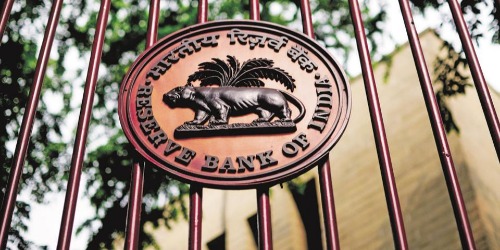
The first bi-monthly Monetary Policy Committee (MPC) in FY 2019-20 begins on April 2, 2019. A week back, Federal Open Market Committee (US) in its last bi-monthly meeting changed its stand and announced that there will be no rate hike this year, after announcing previously that two rate hikes will be appropriate in 2019. The Federal Reserve - US Central Bank - reduced expectations on GDP and inflation and forecast a higher unemployment outlook. The forthcoming MPC is expected to take the changed scenario in the largest economy of the world. This MPC assumes special significance as it comes close to the General Elections. The market is keenly watching to see it both in terms of rate decision if any, and policy guidelines relating to regulation and macroeconomic assessments.
Against this background, a few expectations from the Banking and ARC Sectors are enumerated below:
1. Reduction in Cash Reserve Ratio (CRR) from 4% to 3%
Banks have to maintain CRR with the RBI for contingencies though they do not get any interest on these. At present, it is 4%, and there has been no change in the last six years.
Rationale:
- Over the years, the banking regulations have been scaled up, Basel III is implemented with more rigor and systemic risks have been addressed. Besides, as a first fall back, banks already maintain Statutory Liquidity Ratio (SLR) of 19.5% which are invested in 100% safe Government Securities.
- Historically, thanks to proactive intervention by authorities, there has never been a crisis of confidence in the safety and soundness of banks to meet their obligations.
Reduction in CRR by 1% will release over Rs 1 lakh crore back to the banking system, and transmission will be across the board and swift.
2. Reduction in Repo rate by at least 25 basis points
Rationale:
- The Indian economy grew at 6.6% during Oct-Dec 2018, the slowest in the last five quarters
- Inflation outlook is benign; consumer inflation at 2.57% is much below RBI inflation target of 4%
- A slowdown of export growth to 2.4% in February 2019
- In the last five weeks, the rupee has turned to Asia's best performing currency
- In the recent March meeting, the Fed has started being dovish and markets do not expect any further hike in 2019
A reduction in the Repo rate from the current 6.25% to at least 6% will incentivize credit growth and improve private sector investment.
3. Reduction in minimum investment required by ARCs in Security Receipts (SRs) from 15% to 5%
Rationale:
- The Government of India has liberalized FII/FPI investment, allowing 100% in each tranche of Security Receipts (SRs) issued by Asset Reconstruction Companies (ARCs) subject to directions/guidelines of the RBI. This was made effective from May 12, 2005. However, in terms of an earlier RBI notification dated August 05, 2014, issued to SC/RCs, ARCs have to invest a minimum of 15% in each class of SRs. This is an anomaly. So while the government allows 100% in SRs, in practice it cannot be more than 85% because of another RBI guideline.
- Besides, nowadays most of ARC sale transactions are in 100% cash, and banks do not have any risk in their books. In such a scenario, if an eligible investor wants to pump in money, the role of an ARC is similar to that of an Asset Manager. SEBI Guidelines for Alternative Investment Fund (AIF) prescribes only 2.5% investment by the manager.
With these factors in mind, in the cases where banks get 100% clean cash exit while selling bad loans to ARCs, the minimum stipulation of investment by ARCs may be reduced from 15% to 5%.
4. ARCs may be permitted to subscribe to equity and extend interim finance for cases under IBC
Rationale:
ARCs are institutional entities created under a central legislation SARFAESI Act to resolve NPAs. However, in terms of current regulations, they cannot invest in equity (other than through debt conversion) and cannot extend finance to a sick unit (without first acquiring the debt).
It is suggested that for cases under IBC where ARC is a resolution applicant, they may be permitted to invest in equity or extend need-based finance to stressed assets for a successful turnaround.
Congress poll manifesto promises to simplify GST, create a department to help startups
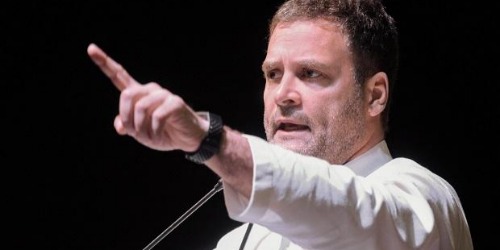
Congress President Rahul Gandhi on Tuesday released his party's manifesto for the 2019 Lok Sabha elections, with focus on jobs, farmers, industry, and women security. The Congress manifesto was released in the presence of UPA Chairperson Sonia Gandhi, former Prime Minister Manmohan Singh, and other party leaders, at Congress headquarters in New Delhi.
Speaking at the event, Rahul Gandhi said if his party was elected to power, its government would give the highest priority to protecting existing jobs and creating new jobs.
"Congress will radically simplify the GST regime with a single moderate rate of tax, zero-rating of exports, and exemption for essential goods and services. We also promise panchayats and municipalities a share of GST revenues," said the manifesto.
If elected to power, the Congress President promises to create an "Enterprise Support Agency" to help entrepreneurs, including start-ups, with all-around business support including counseling, incubation, access to technology, funding, domestic and export markets, and the creation of new products, services, and intellectual property.
Congress proposes to create a new "Ministry of Industry, Services, and Employment", in a bid to underline the link between the growth of the industry and services sectors and rapid creation of jobs.
The Congress manifesto proposes to boost the growth of the manufacturing sector, particularly of MSMEs, through the provision of "world-class infrastructure in industrial hubs and cluster towns" in order to aid the expansion of current units and the creation of new units.
In a bid to boost jobs in the exports sector, the Congress party promises to reward "export-oriented industries" through tax rebates and incentives.
The Congress party promises "regulatory forbearance" for Micro and Small Enterprises. They will be exempt from all applicable laws and regulations (except the Minimum Wages Act and tax laws) for a period of 3 years from 1 April 2019 or, in the case of new businesses, the date of commencement of business. This means freedom from 'Inspector Raj'until they stabilize.
Congress will promote 'Mass Entrepreneurship' and support entrepreneurs to replicate tried and tested models of businesses in order to meet the growing demand for such goods and services, it said.
The main job-creating sectors are construction, textiles, leather, gems and jewelry, entertainment, tourism, and retail businesses. "We will reward businesses that create new jobs by lowering the effective direct tax rates and by lowering contributions to the CSR fund."
Congress proposes to provide "fiscal incentives" to businesses that employ a certain percentage of women.
In a bid to create jobs in the tourism sector, the Congress promises an adequately capitalized "Tourism Development Bank" to provide low-cost, long-term funds for investment in tourism-related businesses. "We will also offer lower rates of corporate and personal income tax on tourism-related business income," it added.
Rahul Gandhi promises to spend 6% of GDP on education if Congress is voted to power
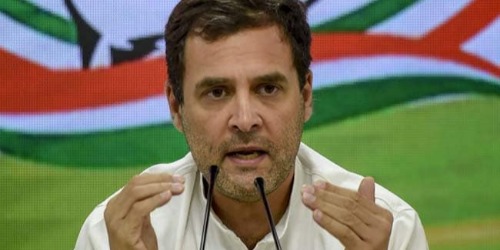
Congress president Rahul Gandhi has said that if Congress voted to power, his government will allocate 6 percent of the total gross domestic product (GDP) on education. Rahul Gandhi was speaking at a public meeting on Sunday in Anantapur, Andhra Pradesh,
Rahul Gandhi said, "We have decided to dramatically increase the amount of money we spend on education. After coming to power, we will spend six percent of GDP on education." "We will make sure all our people have access to top quality education. Those who cannot afford education will get a scholarship," he added.
Rahul Gandhi also spoke about farmers during the rally and said, "Millions of farmers are begging before the Government of India to help them. Family after family has to suffer and commit suicide."
"Recently there were elections in northern India and we promised that after coming to power, we will waive off farmers' loan within the 10 days. Within two days of coming to power, we waived off farmers' loan in all three states," the Congress president added.
"We commit that loans of farmers in Andhra Pradesh will be waived off once we come to power in the state. Food processing industries will be set up close to farms. We will give you cold storage facilities and regular increase in the MSP," Gandhi said.
"I understand the difficulty being faced by farmers because of water. I understand what groundnut farmers are facing. As many as 600 farmers committed suicide last year," he said.
Pre-election sops give real estate a leg-up
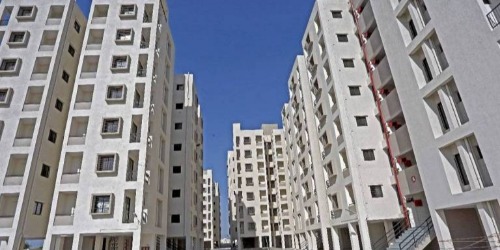
The government's pre-election bonanza for residential real estate seems to have worked well, resulting in over 10 percent increase in sales in the March quarter besides an upswing in new launches.
Conventionally, the period between the announcements of election dates till the declaration of final results saw the real estate market move with caution as buyers adopted a wait-and-watch policy in anticipation that the newly elected government may offer some sops.
"Interestingly, 2019 is proving to be different. We estimate more than 10 percent increase in sales across the top seven cities in the first quarter of 2019, while new launches are estimated to see over 20 percent rise".
This is largely due to the triple benefits offered by the government in less than just two months of 2019. The government doled out sops in the budget for developers undertaking affordable housing projects as well as measures to boost second home buys. It also reduced the GST rates on both affordable and premium housing, which was further propelled by a decline in home loan rates post RBI's repo rate cut.
Niranjan Hiranandani, co-founder, and MD of Hiranandani Group and President of industry association Naredco said sales had picked up in the last two months following the measures undertaken by the government. "We are seeing that buyer interest is back in the market. Especially the reduction in GST from 12 percent (with input tax credit) to five percent (without ITC) for premium homes is attracting a lot of people", he said.
Puri pointed out that affordable housing was keeping the momentum going with both new supply and sales going up. "Even the leading developers- who were primarily into luxury segment- have launched projects within Rs 80 lakh budget. These projects are seeing good sales traction".
Affordable housing projects have been the biggest beneficiary of sops as not only the GST has been slashed from 8 percent to just one percent but builders also get full tax exemption on profits from projects registered till March 2020. "These sops have pushed sales in affordable housing even further", Puri said.


